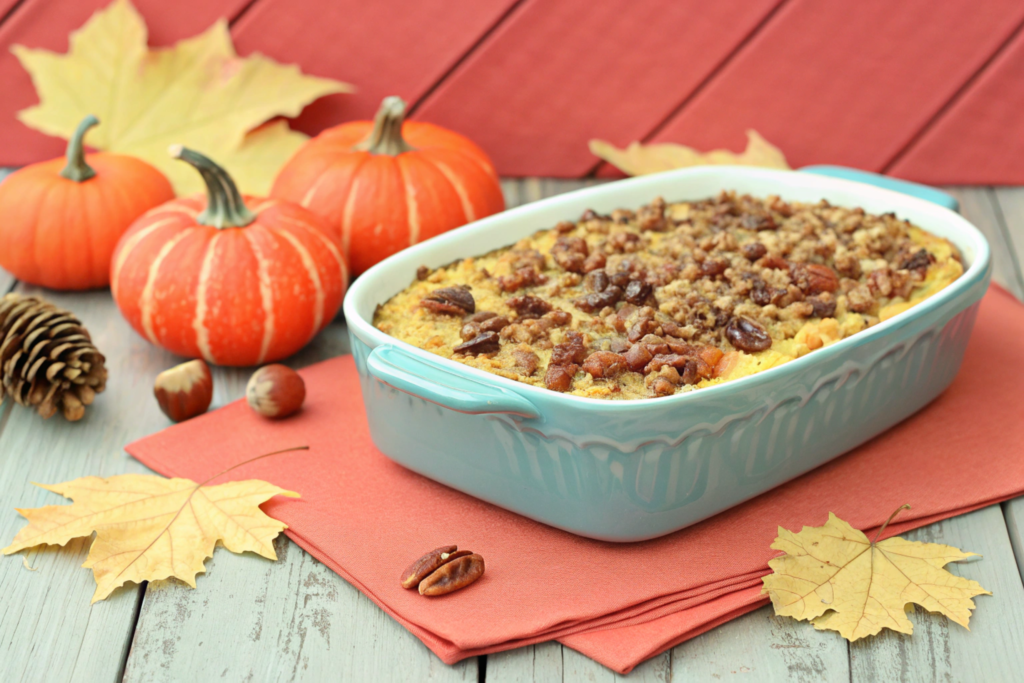Sweet potato casserole is a staple at holiday tables, beloved for its creamy filling and deliciously sweet or savory toppings. However, one common complaint among cooks is a watery texture. This issue can turn a festive dish into a disappointing mess. In this article, we’ll explore the reasons behind a watery sweet potato casserole, how to fix it, and preventive measures to ensure it comes out perfect every time.
Common Reasons for a Watery Sweet Potato Casserole
1. Overcooking Sweet Potatoes
Overcooking sweet potatoes, particularly when boiling, can cause them to absorb too much water. This excessive moisture seeps into the casserole, making it runny.
- Tip: Instead of boiling, consider baking or roasting sweet potatoes, which helps retain their natural texture and prevents water absorption. Learn more about baking versus boiling sweet potatoes and which method suits your recipe best.
2. Undercooked Sweet Potatoes
Conversely, undercooked sweet potatoes can result in uneven texture. Hard chunks may disrupt the smooth consistency you’re aiming for.
- Ensure sweet potatoes are fully tender before mashing by testing with a fork or knife.
3. Excess Liquid in the Recipe
Adding too much liquid—such as milk, cream, or juice—can lead to a runny casserole. Sweet potatoes already contain natural moisture, so extra liquid should be used sparingly.
- Use thickening agents like flour or cornstarch to bind the mixture.
- Opt for sour cream or buttermilk for added creaminess without excessive liquid.
4. Skipping Eggs as a Binding Agent
Eggs act as a binder, helping the casserole set into a custard-like consistency. Without eggs, the mixture may become loose and watery.
- When adding eggs, ensure they’re properly whisked and incorporated. Learn more about the role of eggs in baking for perfect texture.
How to Fix a Watery Casserole
Quick Solutions for a Watery Mixture
If your casserole is already watery, don’t panic. Here are a few quick fixes:
- Drain excess liquid: Carefully remove as much water as possible from the casserole dish.
- Add a thickening agent: Mix a teaspoon of cornstarch or flour into the filling and rebake.
- Layer on toppings: Adding dry toppings like nuts or a crumble mixture can absorb some moisture.
Tips to Prevent a Watery Casserole
1. Choose the Right Cooking Method
Baking or roasting sweet potatoes is ideal for controlling moisture content. For boiling:
- Cut potatoes into uniform sizes to ensure even cooking.
- Drain thoroughly to remove excess water.
2. Use Quality Sweet Potatoes
The variety and freshness of sweet potatoes impact the casserole’s consistency. Starchier varieties hold up better, while overly juicy ones can release water during cooking. For detailed advice, check out how to choose sweet potatoes.
3. Avoid Over-Mixing the Batter
Overworking the mixture can introduce too much air, causing the casserole to collapse and become watery during baking. Mix just enough to combine the ingredients.
FAQs About Sweet Potato Casseroles
Why is my casserole runny even after following a recipe?
Recipes often don’t account for variables like sweet potato variety or cooking methods. Adjust the liquid and ensure the potatoes are properly drained.
Can I fix a watery casserole after it’s baked?
Yes! Rebaking with a small amount of cornstarch or flour mixed into the filling can help thicken it.
Should I refrigerate the mixture before baking?
Yes, refrigerating can help the filling firm up, reducing the risk of wateriness during baking.
Does adding sugar make the casserole watery?
Sugar can draw out moisture from sweet potatoes, so use it sparingly.
How does altitude affect casserole consistency?
At higher altitudes, cooking times and temperatures may need adjustment to achieve the right consistency.
Additional Tips for Success
- Add spices like cinnamon or nutmeg to enhance flavor without relying on overly sweet toppings.
- Use savory toppings like pecans or almonds for balance.
- Avoid piling on wet toppings, such as marshmallows, which can add extra moisture.
Conclusion
A watery sweet potato casserole can be a frustrating setback, but understanding its causes and solutions ensures you never have to face this issue again. By choosing the right ingredients, employing proper cooking techniques, and paying attention to recipe adjustments, you’ll achieve a deliciously creamy and satisfying dish every time.
Make your next holiday meal a hit by following these tips and techniques. Happy cooking!

